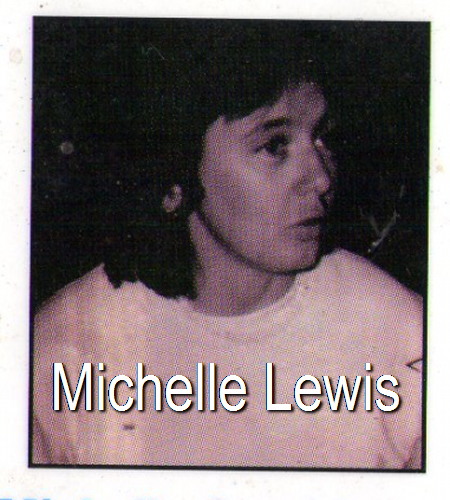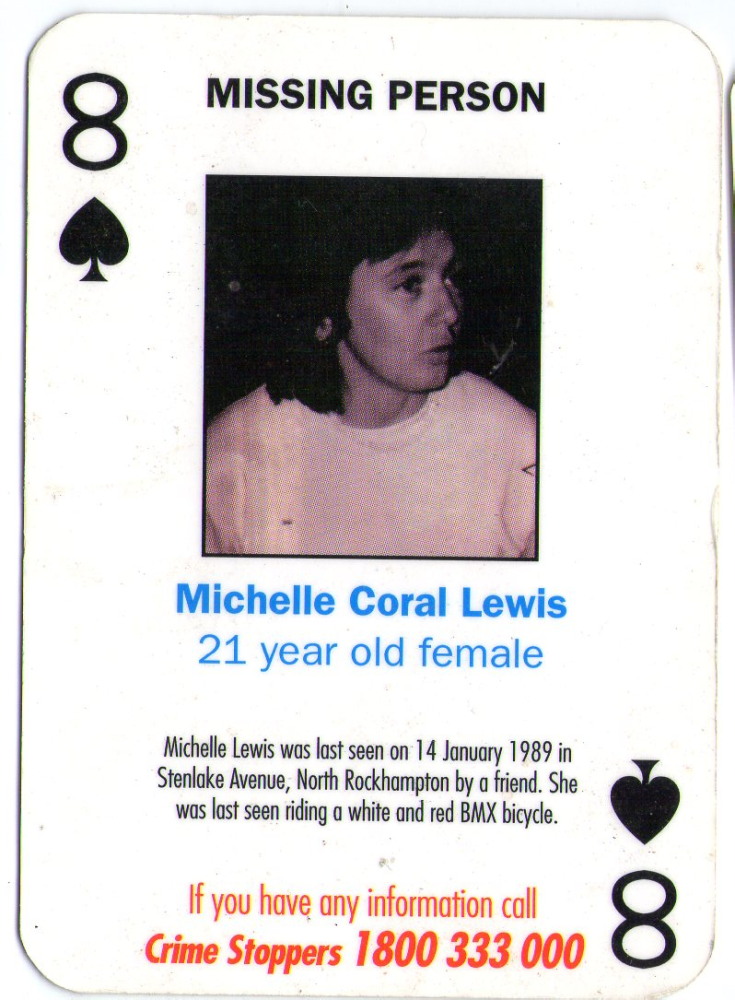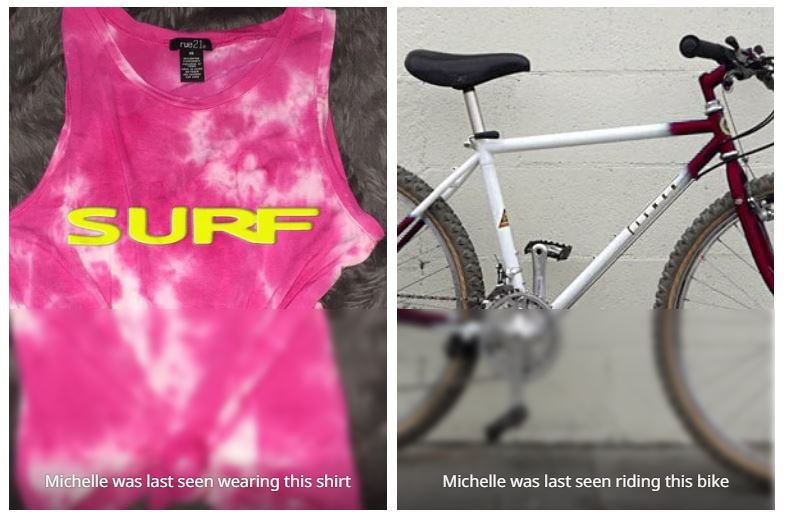 Michelle Coral LEWIS
Michelle Coral LEWIS





SERIAL killer Leonard John Fraser may have taken the truth about the
deaths of up to five women to his grave.
Fraser, 55, who was serving four indefinite life sentences for killing
three Rockhampton women and a schoolgirl, died in his sleep after going into a
cardiac arrest in the secure unit at Princess Alexandra Hospital on New Year's
Eve.
The convicted serial rapist had been admitted a week ago after suffering a
heart attack in his cell at Brisbane's Wolston Correctional Centre.
While there was no confession before his death at 4am yesterday, Fraser
has previously claimed he murdered up to five other women during his criminal
career, which spanned 30 years and two states.
He made the claims to a prisoner turned police informant and a homicide
detective during a 2001 investigation by Taskforce Alex into the disappearances
of four Rockhampton women.
At the time of the investigation, Fraser was serving an indefinite life
sentence for the 1999 murder of Rockhampton schoolgirl Keyra Steinhardt, 9.
Fraser claimed he murdered a hitchhiker by the name of Sandy Lawrence in
an abandoned crocodile zoo in north Queensland in 1982.
Fraser also spoke of the murder of his 17-year-old Aboriginal girlfriend,
claiming she had her throat cut in the back streets of Kings Cross in the early
1970s.
The taskforce recorded Fraser on a listening device saying he murdered two
female hitchhikers in separate incidents in the Port Macquarie area in NSW in
the 1970s.
He said he had returned to the area to find their skeletal remains still
intact.
Some detectives remain convinced that Fraser had a
hand in the murder of Rockhampton woman Michelle Coral Lewis, 21, who
disappeared on the night of January 14, 1989, after leaving a friend's home in
north Rockhampton.
Fraser, who was in "secure custody" at a Rockhampton
jail at the time, was known to frequent the area and had buried his pet dog,
which he killed after having sex with it, on the road where she vanished.
Taskforce Alex investigated the claims but could not
find enough evidence.
Chief Superintendent Graham Rynders, who headed Taskforce Alex, said he
hoped Fraser's death would bring closure to the families of his victims.
"It is the end of a very sad chapter of Queensland's criminal history and
hopefully one that will never be repeated," he said.
Another mystery that may go unsolved surrounds three ponytails of human
hair found in Fraser's bedroom when he was arrested for the Steinhardt murder.
Forensic testing in Australia and the US failed to match the hair to any
of his murder victims or missing persons in Australia.
Police suspect Fraser had kept them as trophies.
In 2003, he became Queensland's first convicted serial killer when a jury
found him guilty of murdering Rockhampton women Beverley Leggo, 36, and Sylvia
Benedetti, 19, and the manslaughter of Julie Turner, 39.
He also had been charged with murdering teenager Natasha Ryan, who later
made headlines when she was found alive during Fraser's murder trial.
Paula Doneman is also the author of Fraser's unofficial biography
Things a Killer Would Know
Disappearance of Michelle Lewis
from Rockhampton in 1989 still haunts retired detective Ann Gumley
THEY were the most unlikely of mates.
A motley crew of two. A pair of outcasts taunted and teased for their
supposed shortcomings.
But for a few years, Kenny Harris and Michelle Lewis had each other. Then,
one day, she didn't come home.
Michelle was a tomboy from a broken family. She loved to fix things. She
was never without her BMX. It took her everywhere she needed to go.
Shuffled between relatives after her mother gave her up, Michelle was
about 16 when her latest guardian, her grandmother, died.
Rockhampton in the late 1980s was small enough for townsfolk to know she
had run out of relatives.
Adeline Salhus or Dell to her friends, was selling seedlings and cut
flowers from a trestle table at a Rockhampton market when she was approached by
a friend.
"The girl's been moved from pillar to post," the friend told Adeline.
Surely there was someone who could take her in?
There was. Dell opened her door to the girl and for the first time in her
life, Michelle had a home.
She had her own bedroom in Dell's lowset, suburban house. It had a big
backyard. It was clean and neat and homely.
The divorcee with a heart as big as an ocean didn't have much but she made
sure her teenage foundling had a room full of nice things.
Michelle was grateful. She kept that room in immaculate condition.
Dell's adult children lived in Tully, where the family had its roots but
her grandson, Kenny, would come to occupy another bedroom in Dell's house. Kenny
wanted to be a racing car driver.
"I think he set his heights too high," his mother Ruby Harris said. "Ken
had cerebral palsy. He was paralysed in one arm and one leg, his right side. One
leg was shorter than the other so he walked with a limp.
"He could ride a bike and eventually was able to drive. His independence
was really important to him and we knew we wouldn't always be there to take care
of him."
Life was cruel for Ken. He endured endless taunts in the schoolyard and it
was just as bad when he eventually entered the workforce.
Michelle had been teased too. She was a shy tomboy with no real family.
She didn't notice his disability and he didn't notice her background.
They watched movies together and toured the town's nightclubs. He was like
her brother and they were fiercely protective of each other. Kenny was 19 when
Michelle turned 21. It was a big day and Dell marked it by throwing a party at
the house.
"She said to Mum, 'you know, this is the only birthday party I've ever
had','' Dell's daughter Ruby said.
On January 14, 1989, Michelle got up and put on her pink tie-dyed singlet
and a pair of shorts. That afternoon she rode her Malvern Star bike - a red and
white BMX she rode everywhere - and pedalled to her friend's house on nearby
Stenlake Ave.
"It was after 10pm and the friend wanted to watch one more movie but
Michelle was worried that Mum would be worried," Ruby said.
The most direct route from Stenlake Ave to Dell's house on Alexandra St
would have been no more than a kilometre and it would have taken her only a few
minutes.
She should have made it home in no time at all but she didn't make it home
at all.
"If you find that bike, you'll find Michelle," said retired detective Ann
Gumley, who led the investigation.
"To think that someone who had such a sad life in her younger years, who
ended up with a foster family who did look after her - I mean, her room was
beautiful, all her clothes were folded in her drawers - just disappeared"
Dell became frantic when Michelle didn't turn up. She searched endlessly.
Kenny took off to look for her. He trawled nightclubs, searched the streets and
kept turning up where police were searching. They wanted to know what he was
doing. He told them: "She's my mate.''
Dell was convinced something terrible had happened to her foster daughter.
There was a man she knew who seemed to have been taking too keen an
interest in Michelle and Dell began to suspect him. She voiced those suspicions
to detectives, who grilled the man but found nothing.
"I spent a lot of time on that investigation," Ann said.
Police interviewed hundreds of people in their hunt.
Eventually, Ann was moved to another part of Queensland. After seven years
she was asked to write a report for the coroner on Michelle's disappearance.
"It was probably one of the saddest things I've ever done," she said. "I'd
worked on a lot of fairly big jobs up in Rocky but she was the one where I
always said if it ever came to light what had happened, I wanted to be the one
to arrest the person involved. I needed to have that closure myself."
Kenny eventually moved home to Tully and took a job with another man
managing a rural property. He was beaten to death by that man, Shaun Dennis,
after an argument over Dennis borrowing Kenny's car.
That made two lives needlessly lost. Dell died last year. And now there's
just Ruby - and Ann the retired detective who cannot forget.
"It was just one of those jobs you can't walk away from,'' Ann said. "You
just wonder what happened. I'd bet my life somebody killed her.
"I don't believe she left of her own accord. She was a girl who'd had such
a sad life and met such a sad end.
"For years I'd see posters put up about missing persons. I always looked
for her but her photo never came up."
‘We have to find Michelle Lewis’ murderer’
It’s the mystery that has haunted a retired detective for years. Now Ann Gumley
wants a specialist cold case homicide squad to take up the search for answers,
writes Kate Kyriacou.
KATE KYRIACOU
Courier Mail
Many investigators believed her to be the victim of serial killer Leonard John
Fraser, a convicted rapist who confessed to killing Beverley Leggo, Sylvia
Benedetti, Julie Turner and schoolgirl Keyra Steinhardt in the late 1990s.
Fraser was in prison serving time for rape when Michelle disappeared however
some believe there were times when he was able to walk from correctional
facilities with lower security.
The case has stuck with retired detective Ann Gumley, who investigated whether a
man connected to Michelle’s foster mother was behind the 21-year-old’s
disappearance.
“Even now, I often think of her and wonder whatever happened to her,” Ms Gumley
said. “She had such a sad life – and for her to just disappear. We never found
her bike. I’ve always said if we find her bike, we’ll find Michelle.”
Michelle was taken in by a local woman, Adeline “Dell” Salhus after her
grandmother died. She lived in a home on Alexander St with Dell and Dell’s
grandson Kenny, who became a close friend.
Michelle had lived a tough life and a party Dell threw for her 21st was the
first birthday celebration she’d had.
On the night of January 14, 1989, Michelle left home to visit a friend on nearby
Stenlake Ave. They watched movies before Michelle left for home at 10pm.
The trip home should have only taken a few minutes but Michelle was never seen
again. Her friend Kenny looked for her for a long time, trawling nightclubs,
walking streets and turning up where police were searching.
Ms Gumley said she believed a man known to Dell had done something to Michelle.
“We took him back to the Yeppoon police station and spoke to him but by then
he’d had plenty of time to think about it,” she said.
“Even driving home after speaking to him, I remember saying, ‘I bet he knows
something’.
“It was a hard case because normally when you investigate a murder you have a
victim, a body. We had nothing.”
Ms Gumley said she would like to see the Homicide Investigation Unit’s cold case
team look into Michelle’s disappearance.
The team recently made the oldest cold case arrest in Australian history, with
charges laid against Vincent O’Dempsey for the 1964 murder of Vincent Raymond
Allen.
“I would love a result for Michelle, oh God yes,” Ms Gumley said.
“It would be lovely to tie someone to her or even just to locate her.”
Detective Senior Sergeant Tara Kentwell, who heads the cold case team, said they
had “carriage of the investigation”. “We would like to find some closure for
Michelle’s family and her community,” she said.
“We would encourage anyone who has any information, no matter how small or
insignificant, to contact Crime Stoppers on 1800 333 000.”
$500,000 reward announced into 1989 suspicious disappearance, Rockhampton
Homicide detectives are hopeful the announcement of a
$500,000 reward for information into the 1989 suspicious disappearance of
Michelle Lewis from Rockhampton will generate new leads.
The State
Government reward was announced today during National Missing Persons Week
as detectives from the Homicide Cold Case Investigation Unit renewed their
appeal to the community for information.
Michelle Lewis, aged 21 at the time of her disappearance, was
last seen alive riding her bike leaving a friend’s house on Stenlake Avenue,
North Rockhampton, intending to ride a short distance to her home on Alexandra
Street about 10.45 pm on Saturday, January 14 1989.
Detective Senior Sergeant Tara Kentwell said the Homicide Cold
Case Investigation Unit began re-examining the case in 2021 and was confident
the case could be solved
“Despite extensive investigations at the time and since, Michelle
has never been located, nor has her bike, and police now strongly suspect she
was murdered around the time she disappeared,” Detective Senior Sergeant
Kentwell said.
“We believe there are people out there with information and with
this significant reward announced, now is the time for those people to
re-consider 33 years’ of silence and come forward to police.”
Former lead investigator, retired detective Ann Gumley joined
today’s appeal, hopeful the renewed focus and reward announcement leads to a
breakthrough in the case.
“I spent a lot of my time as a Rockhampton police officer
searching for Michelle and I still remain committed to seeking justice for her,”
Detective Gumley said.
“Michelle’s family and friends deserve answers, so if you know
something, please come forward.”
The State Government’s reward offering $500,000 is for
information that leads to the conviction of the person, or persons, found to be
responsible for Michelle’s suspected murder.


